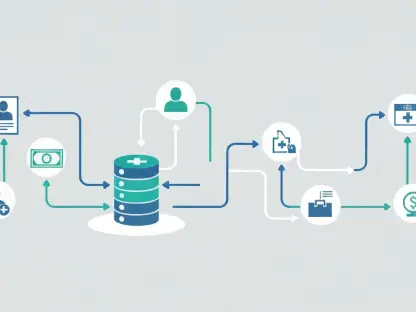The dynamic realm of college sports is undergoing a significant transformation, heavily influenced by advanced predictive analytics. As teams and institutions navigate an ever-changing landscape, these data-driven tools are proving essential for gaining a competitive edge. Predictive models are not only shaping strategies but also enhancing decision-making processes and engaging fans at unprecedented levels. This comprehensive examination delves into the expansive role of predictive analytics in college sports, from understanding team dynamics and navigating player movement to a detailed comparative analysis of predictive methodologies and their impact on fan engagement.
Predictive Analytics in Team Dynamics
Predictive analytics hold a pivotal role in examining and understanding team dynamics within college sports. Through the meticulous analysis of extensive datasets, these models provide a clearer view of how teams evolve over time. They offer detailed insights into team compositions, strengths, weaknesses, and potential outcomes. Drawing parallels with the professional leagues, like the NBA, that have successfully harnessed these tools, the adoption of predictive analytics in college sports marks a significant step toward more strategic decision-making.
In the professional sports realm, decision-makers use predictive models to gain a competitive edge, and college sports teams are now following suit. These models help in evaluating player performance, anticipating trends, and devising adaptive strategies. By harnessing data-driven approaches, college teams can optimize their gameplay, improve training regimens, and effectively manage their rosters. As the landscape continuously evolves, the integration of predictive analytics becomes more crucial for maintaining a competitive advantage and refining team dynamics.
Impact of the Transfer Portal
The transfer portal has undeniably emerged as a game-changer in college sports, allowing athletes more freedom to switch schools and introducing dynamic shifts in team rosters each season. Predictive analytics play an invaluable role in forecasting player movements and adjusting strategies in response. As data from various sources is integrated, these tools enable colleges to anticipate changes and make informed decisions regarding recruitment and roster management.
Moreover, predictive models assist in evaluating how new players will fit into existing team structures, thereby enabling programs to strategize effectively. This capability extends beyond simple player performance metrics, as analytics also consider compatibility factors such as playing styles, positions, and team chemistry. The ability to anticipate and manage player movement helps programs stay ahead in a highly competitive field. As a result, institutions that leverage these insights are better positioned to navigate the complexities introduced by the transfer portal.
Comparative Analysis of Predictive Methods
A key consideration is the comparative analysis of predictive methodologies across different levels of sports. Predictive models, which rely on statistical analysis and historical performance data, generate projections about player performance and match outcomes. The increasing adoption of this method within college athletics signifies a significant stride toward precision in team refinement, mirroring trends witnessed in professional sports.
The strength of these predictive models lies in their ability to swiftly process large datasets and convert them into actionable insights. For coaching staff and management, this rapid processing power translates into more informed decision-making. Coaches can identify key areas requiring improvement, devise targeted training plans, and make strategic adjustments during games. Additionally, management can better assess recruitment strategies and optimize team compositions, ensuring a more effective and competitive approach. As predictive analytics continue to gain traction, their role in enhancing accuracy and efficiency within college sports becomes increasingly apparent.
Enhancing Fan Engagement
One of the most notable impacts of predictive analytics is on fan engagement. These tools enable fans to gain a deeper understanding of the strategies deployed in team building. As predictive analytics are integrated into media content and sports commentary, fans transition from passive spectators to active participants, engaging in discussions about team strategies and potential outcomes. This evolution in fan interaction not only enriches the viewing experience but also fosters a more profound connection to the sport.
With access to detailed insights provided by predictive models, fans can engage in more informed and meaningful conversations. They can analyze player statistics, understand tactical decisions, and anticipate game outcomes, adding a new layer of excitement to their engagement. This deeper level of involvement transforms how sports are consumed. As a result, the fan experience is enhanced, creating a more interactive and engaging environment. The trend of integrating predictive analytics into fan engagement strategies represents a significant shift in the sports industry, ushering in a new era of informed and engaged spectatorship.
Implications for College Programs
As predictive analytics become more ingrained in sports strategies, the broader implications for college programs are profound. Institutions nationwide are exploring the integration of these models to improve roster planning, recruitment outcomes, and adaptability to competitive changes. This trend reflects a growing recognition of the critical role technology plays in modern sports strategies. By effectively leveraging these models, programs can gain significant advantages in an increasingly competitive arena.
Predictive analytics provide institutions with tools to optimize their strategies and enhance their decision-making capabilities. This technological integration allows for more precise and data-driven approaches to various aspects of team management, from recruitment and training to game planning and execution. The continuous development and adoption of predictive methodologies signify a dynamic shift toward the future of college sports. Programs that embrace these advancements are better equipped to succeed, ensuring their resilience and competitiveness in a rapidly evolving landscape.
Navigating the Future of College Sports
The dynamic world of college sports is experiencing a major transformation, driven by the power of advanced predictive analytics. As teams and institutions adapt to this evolving landscape, these data-driven tools are becoming indispensable for obtaining a competitive advantage. Predictive models are not only shaping game strategies but also refining decision-making processes and boosting fan engagement to unprecedented levels. This extensive analysis explores the significant role of predictive analytics in college sports. It covers various aspects such as understanding team dynamics, managing player movements, and presents a detailed comparative evaluation of different predictive methodologies. Additionally, it highlights the impact that these analytics have on enhancing fan interaction and engagement. By leveraging advanced data insights, colleges and their athletic programs can make more informed decisions to optimize performance and elevate the overall sports experience for all stakeholders involved.









